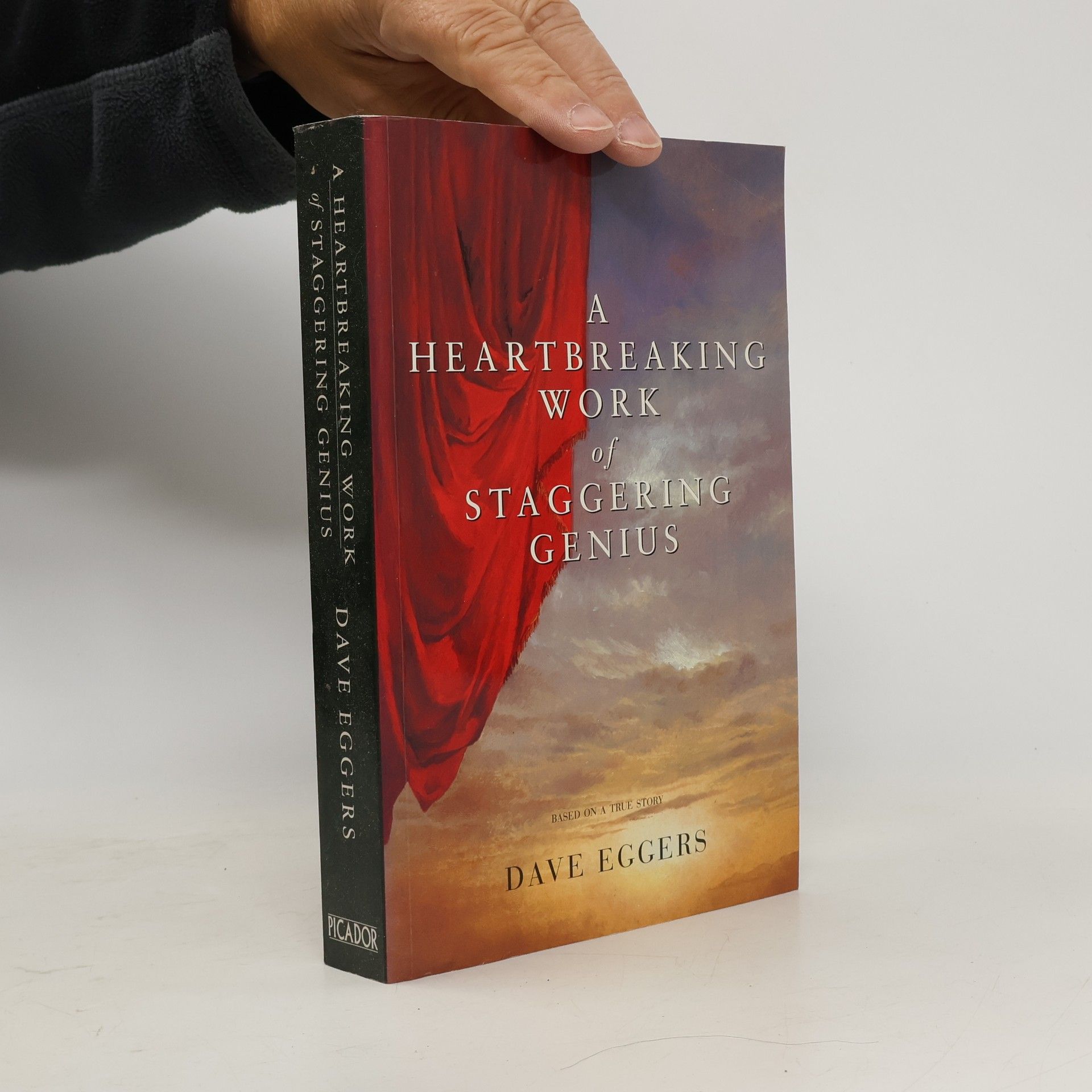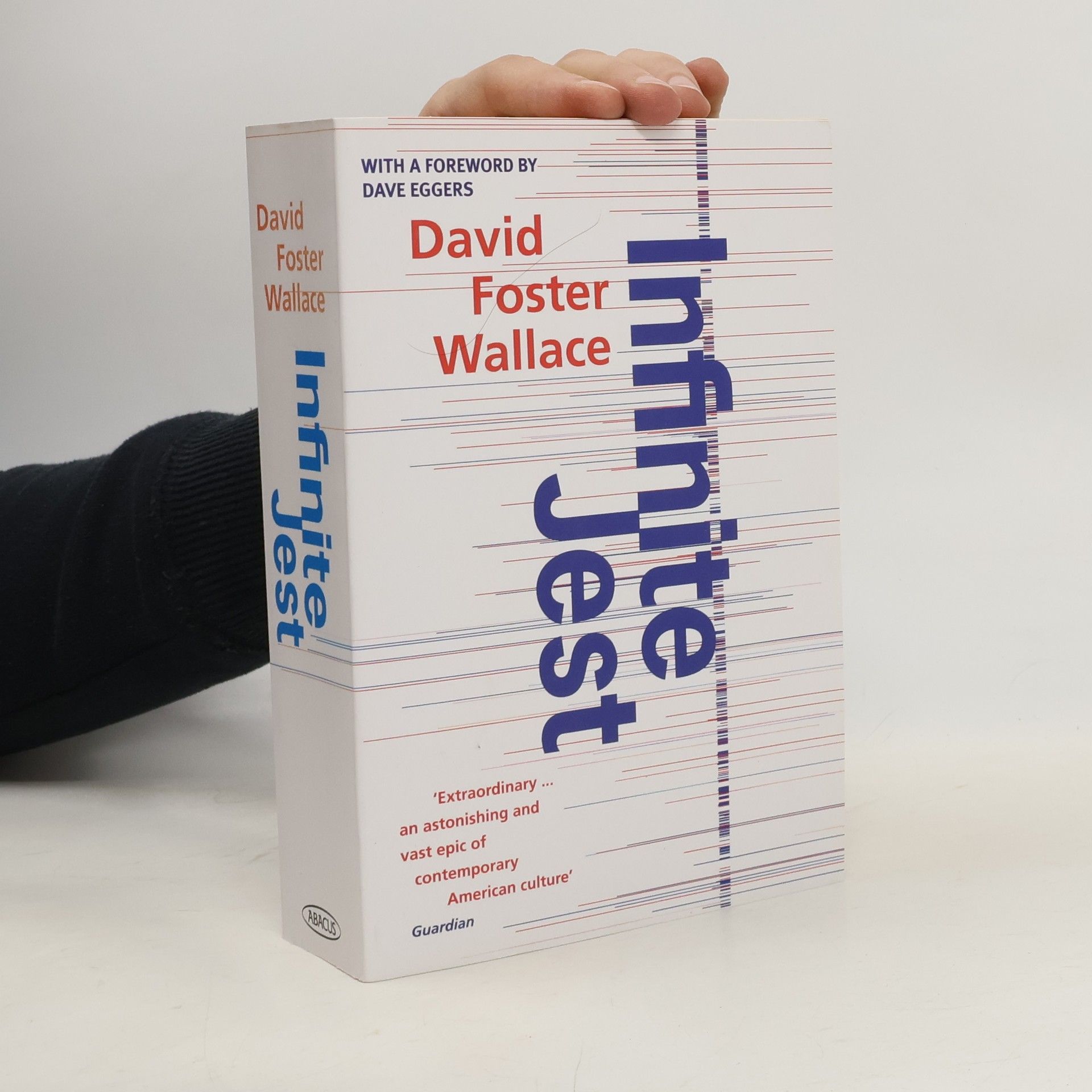Mae Hollandová získa prácu v najsilnejšej internetovej spoločnosti na svete, ktorá má symbolický názov Kruh. Dostala tak skvelú životnú príležitosť pracovať v supermodernom kalifornskom sídle, kde všetci horúčkovito pracujú a stretávajú sa v luxusných kluboch, na vlastných športoviskách či skvelých reštauráciách. Kruh spája používateľov osobných e-mailov, sociálnych sietí, uskutočňuje podozrivé bankové operácie a nákupy svojím univerzálnym operačným systémom, ktorý napokon vyústi v jedinú on-line identitu na internete. Mae spočiatku nemôže uveriť svojmu šťastiu -- aj keď sa jej svet za hranicami areálu odcudzí, aj keď ňou otrasie čudné stretnutie s istým kolegom, a aj keď ju práca v Kruhu postupne okráda o vlastný život a súkromie. To, čo sa začalo ako úchvatný príbeh o ženských ambíciách a idealizme, sa čoskoro stane srdcervúcim románom plným napätia a frustrácie. Kde sú vlastne hranice ľudského poznania? Chceme to vôbec vedieť?
Dave Eggers Knihy
Dave Eggers je autorom, ktorého diela sa často zaoberajú súčasnými spoločenskými problémami a ľudskou existenciou. Jeho písanie vyniká prenikavým vhľadom a štylizovaným jazykom, ktorý čitateľa vtiahne do hlbokých úvah o svete okolo nás. Prostredníctvom svojej literárnej tvorby aj založením nezávislého vydavateľstva McSweeney’s sa snaží podporovať nové hlasy a poukazovať na dôležité spoločenské témy. Eggersov prístup je charakteristický snahou o prepojenie umenia s aktivizmom a vzdelávaním, čím vytvára diela, ktoré sú tak literárne cenné, ako aj spoločensky relevantné.







Hologram pre kráľa
- 293 stránok
- 11 hodin čítania
Jeden z najvplyvnejších amerických autorov súčasnosti prináša vtipný a zároveň napínavý príbeh rozvedeného päťdesiatnika, ktorého podnik skrachoval v dôsledku americkej ekonomickej krízy. Z dlhov sa chce vyhrabať vďaka lukratívnej zákazke v prosperujúcej a peniazmi rozprávkovo oplývajúcej Saudskej Arábii. Čo všetko sa môže stať počas nekonečného čakania na arabského kráľa?
A Heartbreaking Work of Staggering Genius
- 376 stránok
- 14 hodin čítania
'When you read his extraordinary memoir you don't laugh, then cry, then laugh again; you somehow experience these emotions all at once.' "Well, this was when Bill was sighing a lot. He had decided that after our parents died he just didn't want any more fighting between what was left of us. He was twenty-four, Beth was twenty-three, I was twenty-one, Toph was eight, and all of us were so tried already, from that winter. So when something would come up, any little thing, some bill to pay or decision to make, he would just sigh, his eyes tired, his mouth in a sorry kind of smile. But Beth and I...Jesus, we were fighting with everyone, anyone, each other, with strangers at bars, anywhere -- we were angry people wanting to exact revenge. We came to California and we wanted everything, would take what was ours, anything within reach. And I decided that little Toph and I, he with his backward hat and long hair, living together in our little house in Berkeley, would be world-destroyers. We inherited each other and, we felt, a responsibility to reinvent everything, to scoff and re-create and drive fast while singing loudly and pounding the windows. It was a hopeless sort of exhilaration, a kind of arrogance born of fatalism, I guess, of the feeling that if you could lose a couple of parents in a month, then basically anything could happen, at any time -- all bullets bear your name, all cars are there to crush you, any balcony could give way; more disaster seemed only logical. And then, as in Dorothy's dream, all these people I grew up with were there, too, some of them orphans also, most but not all of us believing that what we had been given was extraordinary, that it was time to tear or break down, ruin, remake, take and devour. This was San Francisco, you know, and everyone had some dumb idea -- I mean, wicca? -- and no one there would tell you yours was doomed. Thus the public nudity, and this ridiculous magazine, and the Real World tryout, all this need, most of it disguised by sneering, but all driven by a hyper-awareness of this window, I guess, a few years when your muscles are taut, coiled up and vibrating. But what to do with the energy? I mean, when we drive, Toph and I, and we drive past people, standing on top of all these hills, part of me wants to stop the car and turn up the radio and have us all dance in formation, and part of me wants to run them all over."
Free dog Johannes' job is to observe everything that happens in his urban park and report back to the park's three bison elders, but changes are afoot, including more humans, a new building, a boatload of goats, and a shocking revelation that changes his view of the world.
McSweeney's Issue 4 is a box containing 14 booklets. The booklets feature fiction and nonfiction, from Denis Johnson, Haruki Murakami, Sheila Heti, George Saunders, Jonathan Lethem, Rachel Cohen, Lawrence Weschler, Rick Moody, Lydia Davis, and many others. The first of many experiments in book and magazine packaging, McSweeney's Issue 4 marks a departure from the simpler paperback mold of the first three issues. For this issue, authors chose the art and design of their booklet. So, for example, Denis Johnson chose to use his son Matt's doodle for the cover of his three-act play "Hellhound On My Trail." George Saunders gave us a photo he took years ago, in Russia, for the cover of his "Four Institutional Monologues." And we took all of these booklets, and fit them in a box with a wood-footed bird adorned on the top. (For those asking Why?, there is also a booklet devoted to answering that question, written by editor Dave Eggers.) This rare issue, virtually out of print since it was first published, is now lovingly remade with a sturdier, more archive-worthy box and the same wondrous collection of prose.
Forty Stories
- 256 stránok
- 9 hodin čítania
This collection of pithy, brilliantly acerbic pieces is a companion to Sixty Stories, Barthelme's earlier retrospective volume. Barthelme spotlights the idiosyncratic, haughty, sometimes downright ludicrous behavior of human beings, but it is style rather than content which takes precedence.
Surviving Justice
- 476 stránok
- 17 hodin čítania
Surviving Justice presents oral histories of thirteen people from all walks of life, who, through a combination of all-too-common factors-overzealous prosecutors, inept defense lawyers, coercive interrogation tactics, eyewitness misidentification- found themselves imprisoned for crimes that they did not commit. The stories these exonerated men and women tell are spellbinding, heartbreaking, and ultimately inspiring. These narrators include: Paul Terry, who spent twenty-seven years wrongfully imprisoned, and emerged psychologically devastated and barely able to communicate. Beverly Monroe, an organic chemist who was coerced into falsely confessing to the murder of her lover. Free after seven years, she faces the daunting task of rebuilding her life from the ground up. Joseph Amrine, who was sentenced to death for murder. Seventeen years later, when DNA evidence exonerated him, Amrine emerged from prison with nothing but the fourteen dollars in his inmate account.
NEWBERY MEDAL WINNER • #1 NEW YORK TIMES BESTSELLER • An enthralling novel for all ages by award-winning author Dave Eggers, told from the perspective of one uniquely endearing dog— featuring beautiful color artwork with illustrations by Caldecott honoree Shawn Harris. “Johannes is a highly engaging narrator whose exuberance and good nature run like a bright thread through the novel’s pages.” —The New York Times Johannes, a free dog, lives in an urban park by the sea. His job is to be the Eyes—to see everything that happens within the park and report back to the park’s elders, three ancient Bison. His friends—a seagull, a raccoon, a squirrel, and a pelican—work with him as the Assistant Eyes, observing the humans and other animals who share the park and making sure the Equilibrium is in balance. But changes are afoot. More humans, including Trouble Travelers, arrive in the park. A new building, containing mysterious and hypnotic rectangles, goes up. And then there are the goats—an actual boatload of goats—who appear, along with a shocking revelation that changes Johannes’s view of the world. A story about friendship, beauty, liberation, and running very, very fast, The Eyes & the Impossible will make readers of all ages see the world around them in a wholly new way.
Infinite Jest
- 1104 stránok
- 39 hodin čítania
Somewhere in the not-so-distant future the residents of Ennet House, a Boston halfway house for recovering addicts, and students at the nearby Enfield Tennis Academy are ensnared in the search for the master copy of INFINITE JEST, a movie said to be so dangerously entertaining its viewers become entranced and expire in a state of catatonic bliss . . . 'Wallace's exuberance and intellectual impishness are a delight, and he has deep things to say about the hollowness of contemporary American pleasure . . . sentences and whole pages are marvels of cosmic concentration . . . Wallace is a superb comedian of culture' James Wood, GUARDIAN
Ausstellung im Irish Museum of Modern Art, Dublin 28.02. - 03.06.2007 Die Ausstellung gibt mit 23 großformatigen Fotografien einen Überblick über Thomas Demands aktuelle Arbeiten. Außerdem werden ein Filmprojekt und eine speziell für das Museum erarbeitete Architekturinstallation gezeigt. Das zentrales Thema sind Treppen, Leitern und Lifte. Der Titel verweist auch auf den so genannten Treppenwitz, der einem erst auf der Treppe einfällt – wenn es zu spät ist. In einem ironischen Bezug zum Titel steht auch eine neue Arbeit mit dem Titel Landing, die die Scherben zerbrochener Qing- Vasen auf einem Treppenabsatz zeigt, verursacht durch einen Besucher des Fitzwilliam Museum Cambridge, der über seine Schnürsenkel gestolpert war.
